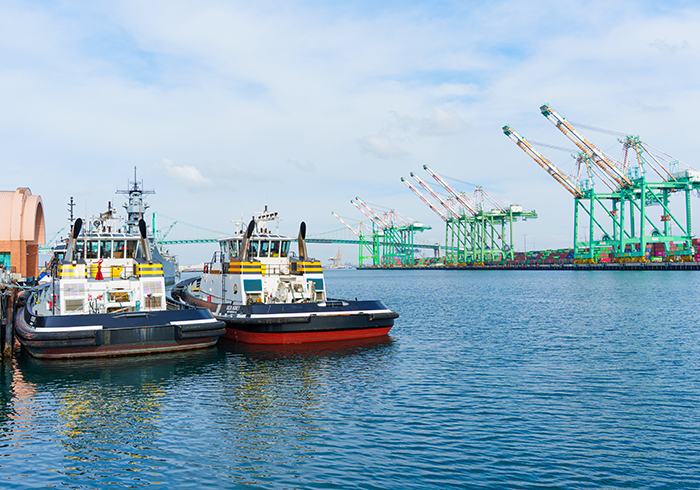The US’ rejection of the International Maritime Organization’s (IMO) net-zero framework has put its overall adoption at risk and could jeopardise decarbonisation targets, industry figures have said.
The United Nations’ (UN) shipping agency agreed the draft terms on reducing greenhouse gas (GHG) emissions at an environment committee meeting in April this year, with the aim of incorporating it into the international convention targeting marine pollution in October.
But last week (August 12), US Secretary of State Marco Rubio, Secretary of Commerce Howard Lutnick, Secretary of Energy Chris Wright and Secretary of Transportation Sean Duffy said in a joint statement that they would not accept “any international environmental agreement that unduly or unfairly burdens” the country.
The statement criticises fuel standards that “would conveniently benefit China by requiring the use of expensive fuels unavailable at global scale”, while preventing the use of “lower emissions options where US industry leads such as liquified natural gas and biofuels”.
Describing the framework as a “global carbon tax on Americans levied by an unaccountable UN organisation”, they threatened retaliation against countries that continued to support the measures.
For the framework to be adopted, it must be voted in by two-thirds of the 108 states covered by the convention. After that, it will be automatically accepted, unless it is opposed by either one-third of IMO parties or members whose merchant fleets represent at least 50% of the gross tonnage of the world’s merchant fleet.
Rico Luman, senior economist, transport and logistics at Dutch bank ING, says the move by the US “likely complicates the final adoption scheduled in October”.
“Although the proposal is due to be accepted by a two-thirds majority, the US seems unwilling to accept its implementation, which puts the authority of IMO at risk,” he says.
“If the US doesn’t accept the effectuation, this will complicate the whole system,” Luman says. “This could also make other countries doubt, because they fear the consequences as the US could retaliate. This puts the final adoption in danger.”
The framework brings in a set of “mid-term measures” that include targets for reducing ships’ annual GHG fuel intensity and penalties for ships that emit more than this.
To balance the deficit, ships can transfer surplus units from other vessels, use units they have previously banked if they have outperformed the targets or pay penalties in the form of buying “remedial” units.
These payments will form the basis of a net-zero fund, which the IMO says will be used to reward ships using zero or near-zero energy sources and support research into these fuels as well as ways to achieve a just transition.
Transport & Environment, a group of European NGOs that promote sustainable transport, has estimated the fund will generate around US$10mn a year until 2035.
Nicolas Lockhart, partner at law firm Sidley, points out that the US cannot legally stop other IMO parties from adopting and implementing the framework, though it can take steps to prevent itself from being affected.
“Politically, the US’ decision could have an impact on voting and opposition by other IMO parties. The US could try to raise a blocking minority at the IMO,” he says, adding that there have been media reports that the US is taking this course.
Currently, the top five flag states – Liberia, Panama, Marshall Islands, Hong Kong and Singapore – represent more than 50% of the world’s gross tonnage.
Emma Fenton, senior director of climate diplomacy at climate change NGO Opportunity Green, adds: “US attempts to weaken the IMO’s historic progress are nothing new – they failed to successfully stop the agreement of the framework in April and while we always knew there would be resistance, countries stood firm.”
“The decision to introduce the IMO net-zero framework marked a turning point, giving shipping a real chance to steer toward a cleaner, greener future – and the global momentum behind it remains strong, with major flag states, including Panama, staying committed. With global cooperation and solidarity at the centre of these negotiations, scare tactics like these cannot gain traction,” Fenton says.
The framework is due to come into force in February 2027 for large ocean-going ships over 5,000 gross tonnage, with the first data collection due from January 2028, and aims to help the sector meet its overarching GHG emissions targets.
In 2023, the IMO agreed to target a 20% reduction in total annual emissions by 2030 compared to 2008 levels and a 70% reduction in total emissions by 2040.
Net zero is set to be achieved “by or around” 2050, to allow for “different national circumstances”.
While there may be a more “climate-friendly” US administration in power then, Luman says the delay wastes vital time needed for the implementation process.
“The proposed strategy is likely not an end stage but a start. All in all, it will be a blow if this derails the adoption and implementation of [the IMO’s] new climate strategy, which was meant to be a breakthrough on a global level,” Luman says.
The global shipping industry has also been searching for other ways to reduce its carbon emissions, including by switching to electronic bills of lading (BLs).
Research from consortium Global Shipping Business Network found that the industry would reduce CO2 equivalent emissions by up to 440,820 metric tonnes per year if all shipping carriers were to digitise their paper BLs.








